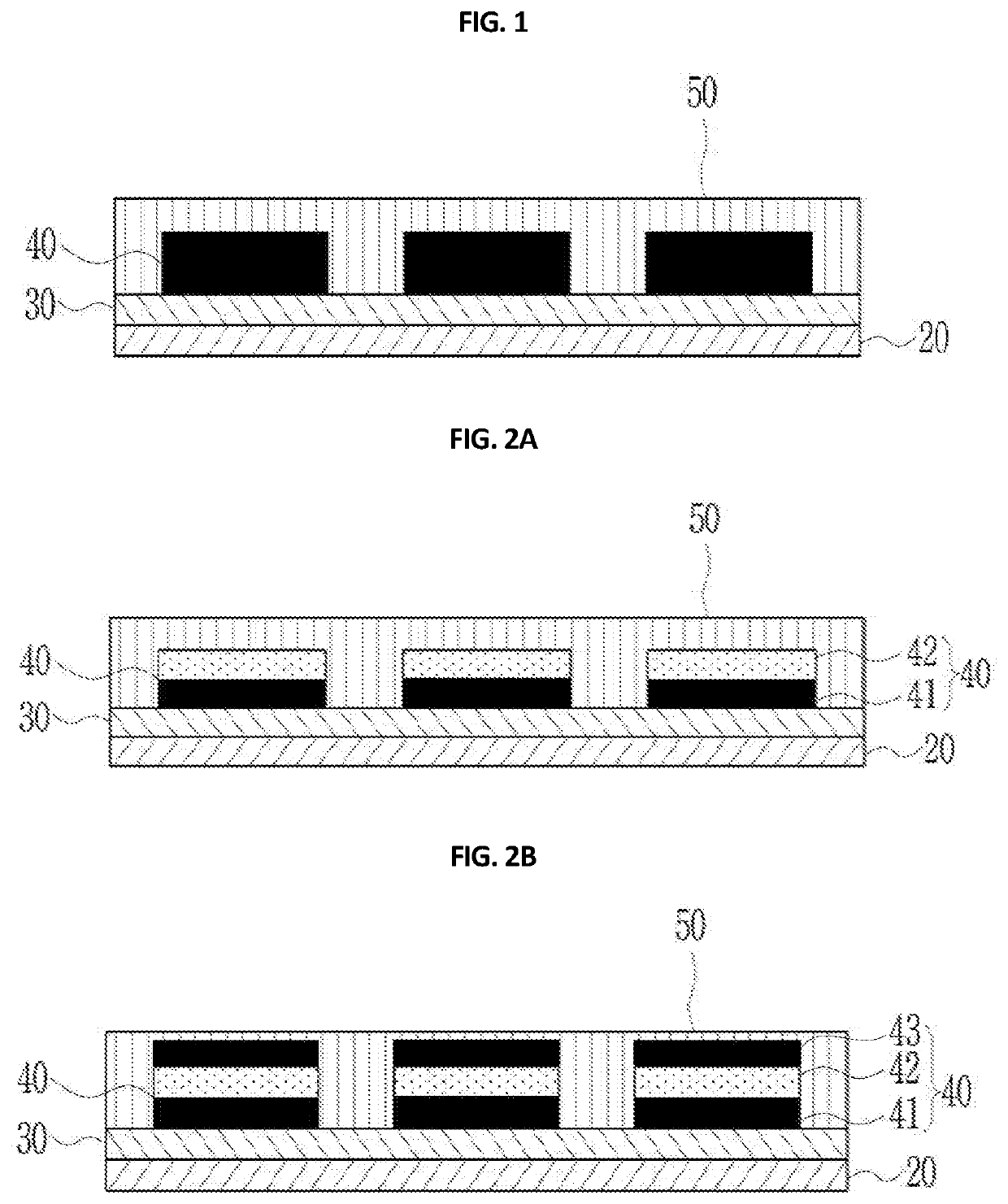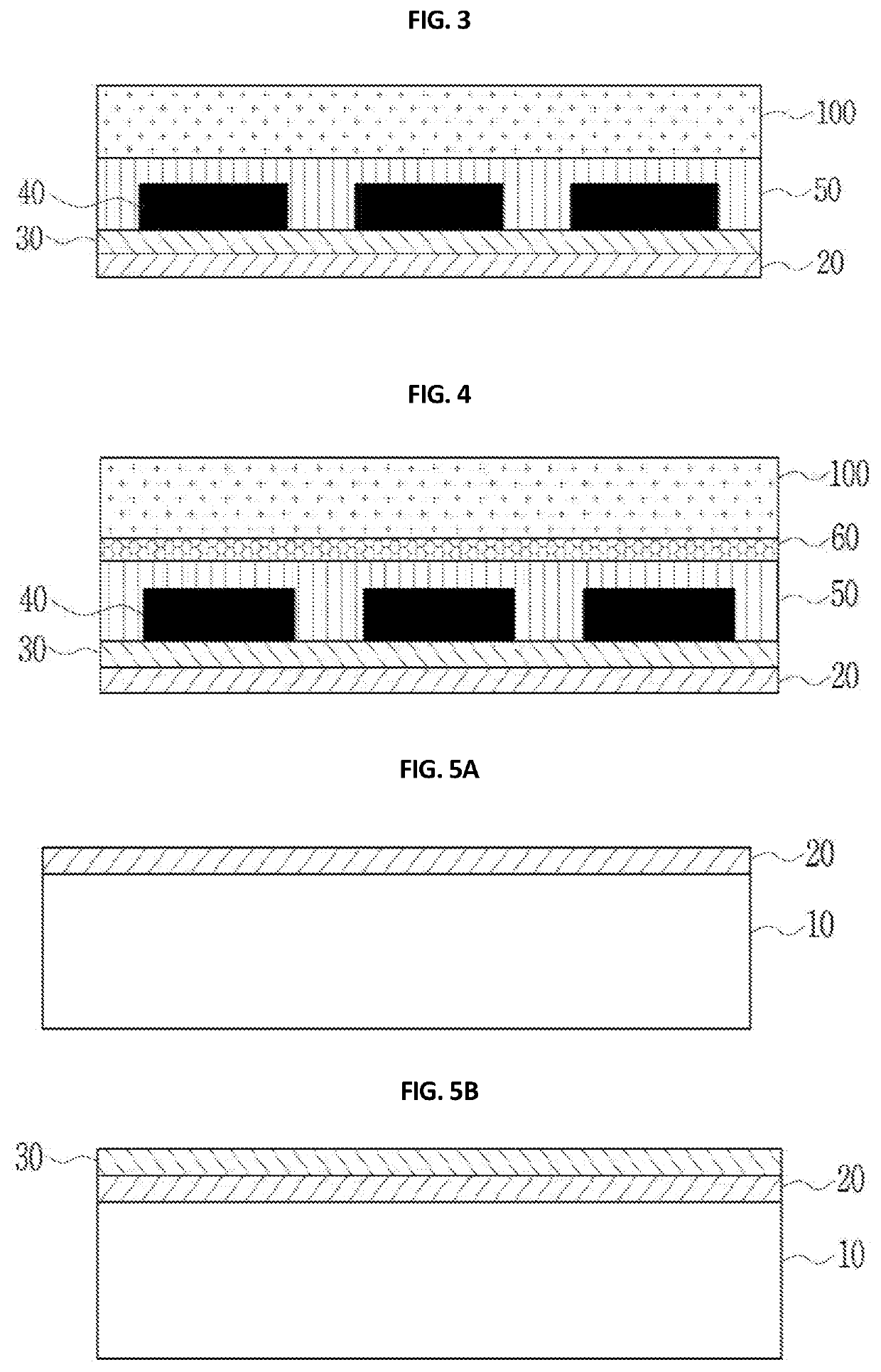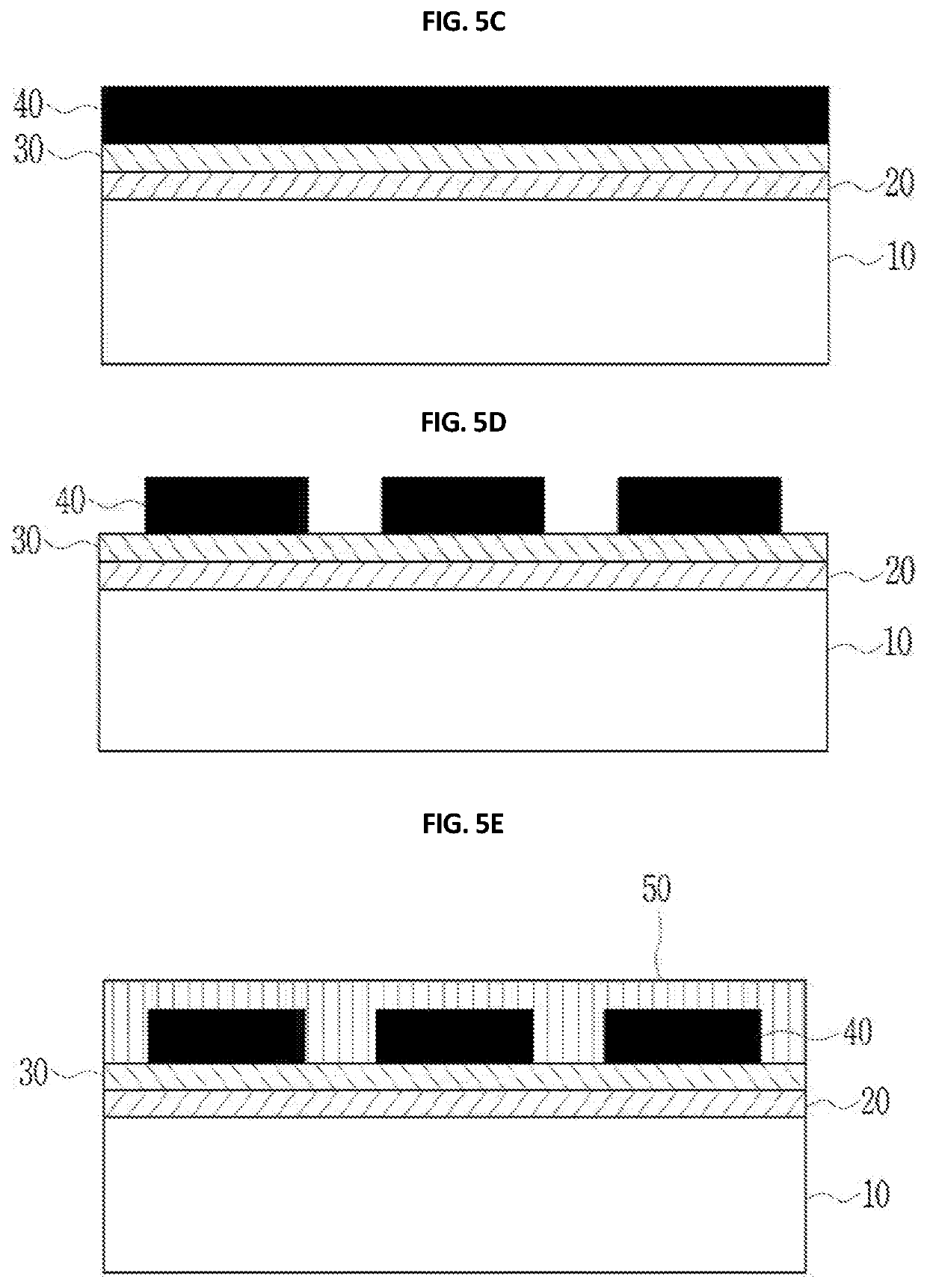Film touch sensor and structure including the same
a technology of touch sensor and film, which is applied in the direction of conductive materials, insulating supports, synthetic resin layered products, etc., can solve the problems of difficult to remove the sacrificial layer, metal wirings and the base film and the metal wirings of the wiring substrate cannot be completely peeled off from the substrate, etc., to achieve excellent peelability, increase process efficiency and productivity, and improve the effect of manufacturing the touch sensor
- Summary
- Abstract
- Description
- Claims
- Application Information
AI Technical Summary
Benefits of technology
Problems solved by technology
Method used
Image
Examples
examples and synthesis examples
PREPARATIVE EXAMPLES AND SYNTHESIS EXAMPLES
[0213]1. Preparation of Polymers as a Component of Curable Resin Composition
[0214]As a component of the curable resin composition, polymers were prepared as follows.
[Preparative Example 1] Preparation of Polymer A-1
[0215]4-benzoyloxy-3-hydroxycyclohexylmethyl methacrylate represented by Formula 1-1 below was used as a monomer, and 100 parts by weight (‘wt. parts’) thereof was dissolved in propylene glycol monomethyl ether (PGME) so as to be an amount of 30 wt. parts. The obtained solution was heated to 80° C. while blowing a nitrogen gas thereinto, 2,2′-azobisisobutyronitrile (AIBN) was added thereto in an amount of 5 mol % to a total weight of the monomer, and then a reaction was carried out at 80° C. for 8 hours to prepare Polymer A-1. A weight average molecular weight (MW) of the prepared polymer was measured by gel filtration chromatography, and the measured result was 25,000.
[Preparative Example 2] Preparation of Polymer A-2
[0216]Polym...
synthesis example 1
[0232]1.6 wt. parts of Polymer A-1, 3.2 wt. parts of hexamethoxymethyl melamine represented by Formula B-1 below as a cross-linking agent, and 0.2 wt. parts of pyridinium-p-toluenesulfonic acid as a polymerization catalyst were dissolved in 95 wt. parts of propylene glycol monomethyl ether (PGME) to obtain a solution. The obtained solution was applied to soda glass having a thickness of 0.7 mm and alkali-free glass having a thickness of 0.5 mm, respectively, by spin coating, and then heat-treated at 150° C. or higher for 30 minutes to form a film having a thickness of about 300 nm.
synthesis example 2
[0233]2.4 wt. parts of Polymer A-1, 2.4 wt. parts of hexamethoxymethyl melamine (Formula B-1) as a cross-linking agent and 0.2 wt. parts of pyridinium-p-toluenesulfonic acid as a polymerization catalyst were dissolved in 95 wt. parts of propylene glycol monomethyl ether (PGME) to obtain a solution. The obtained solution was applied to soda glass and alkali-free glass, respectively, and then heat-treated similar to Synthesis Example 1 to form a film having a thickness of about 300 nm.
PUM
| Property | Measurement | Unit |
|---|---|---|
| thickness | aaaaa | aaaaa |
| heat resistance | aaaaa | aaaaa |
| heat resistance | aaaaa | aaaaa |
Abstract
Description
Claims
Application Information
 Login to View More
Login to View More - R&D Engineer
- R&D Manager
- IP Professional
- Industry Leading Data Capabilities
- Powerful AI technology
- Patent DNA Extraction
Browse by: Latest US Patents, China's latest patents, Technical Efficacy Thesaurus, Application Domain, Technology Topic, Popular Technical Reports.
© 2024 PatSnap. All rights reserved.Legal|Privacy policy|Modern Slavery Act Transparency Statement|Sitemap|About US| Contact US: help@patsnap.com










